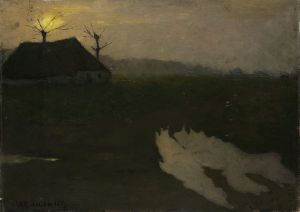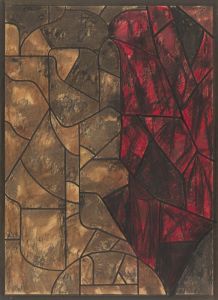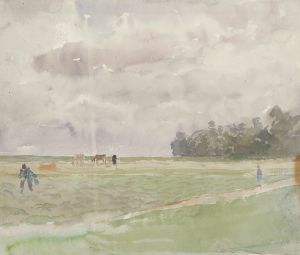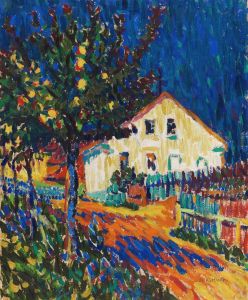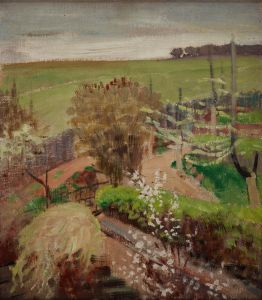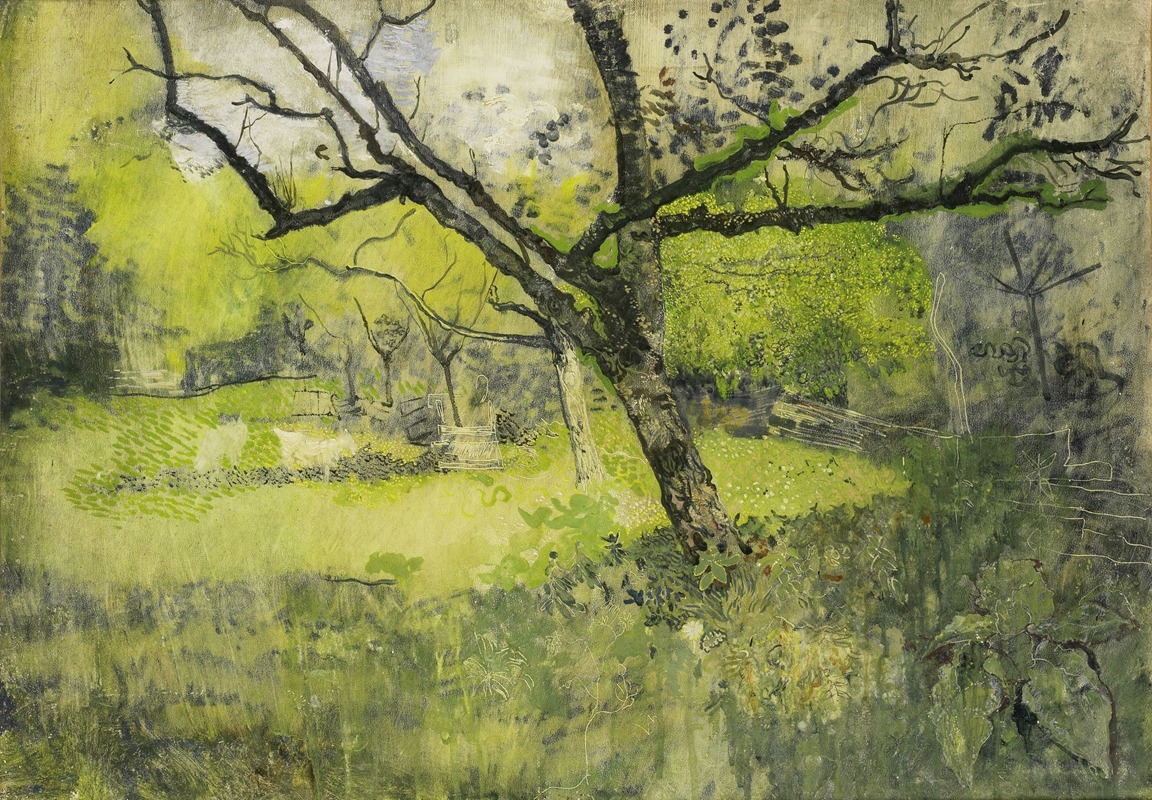
Orchard at Eemnes
A hand-painted replica of Richard Nicolaüs Roland Holst’s masterpiece Orchard at Eemnes, meticulously crafted by professional artists to capture the true essence of the original. Each piece is created with museum-quality canvas and rare mineral pigments, carefully painted by experienced artists with delicate brushstrokes and rich, layered colors to perfectly recreate the texture of the original artwork. Unlike machine-printed reproductions, this hand-painted version brings the painting to life, infused with the artist’s emotions and skill in every stroke. Whether for personal collection or home decoration, it instantly elevates the artistic atmosphere of any space.
"Orchard at Eemnes" is a painting by the Dutch artist Richard Nicolaüs Roland Holst (1868–1938), a prominent figure in the Dutch art scene during the late 19th and early 20th centuries. Roland Holst was known for his contributions to Symbolism and his involvement in the Arts and Crafts movement in the Netherlands. His works often reflect a deep connection to nature, spirituality, and social ideals.
The painting depicts an orchard in Eemnes, a small town in the province of Utrecht, Netherlands. Eemnes is known for its rural landscapes, which have inspired many artists over the years. In "Orchard at Eemnes," Roland Holst captures the serene beauty of the Dutch countryside, emphasizing the harmony between nature and human cultivation. The composition likely reflects his interest in creating art that conveys a sense of peace and unity with the natural world.
Roland Holst's artistic style was influenced by the Symbolist movement, which sought to express ideas and emotions through symbolic imagery rather than direct representation. While "Orchard at Eemnes" is more grounded in naturalistic depiction, it still carries a sense of quiet contemplation and reverence for the landscape. The use of color and light in the painting demonstrates Roland Holst's skill in creating mood and atmosphere, hallmarks of his broader body of work.
The exact date of the painting's creation is not widely documented, but it is consistent with Roland Holst's active period as an artist, which spanned the late 19th century and early 20th century. During this time, he was also involved in designing murals, stained glass, and other decorative arts, reflecting his multidisciplinary approach to art.
"Orchard at Eemnes" is an example of Roland Holst's dedication to portraying the Dutch landscape with sensitivity and depth. It serves as a testament to his ability to merge artistic technique with a profound appreciation for the natural environment. The painting is part of his broader legacy as an artist who sought to bridge the gap between art and life, emphasizing the importance of beauty and meaning in everyday surroundings.
Further details about the painting's current location, provenance, or exhibition history are not readily available in public records.





